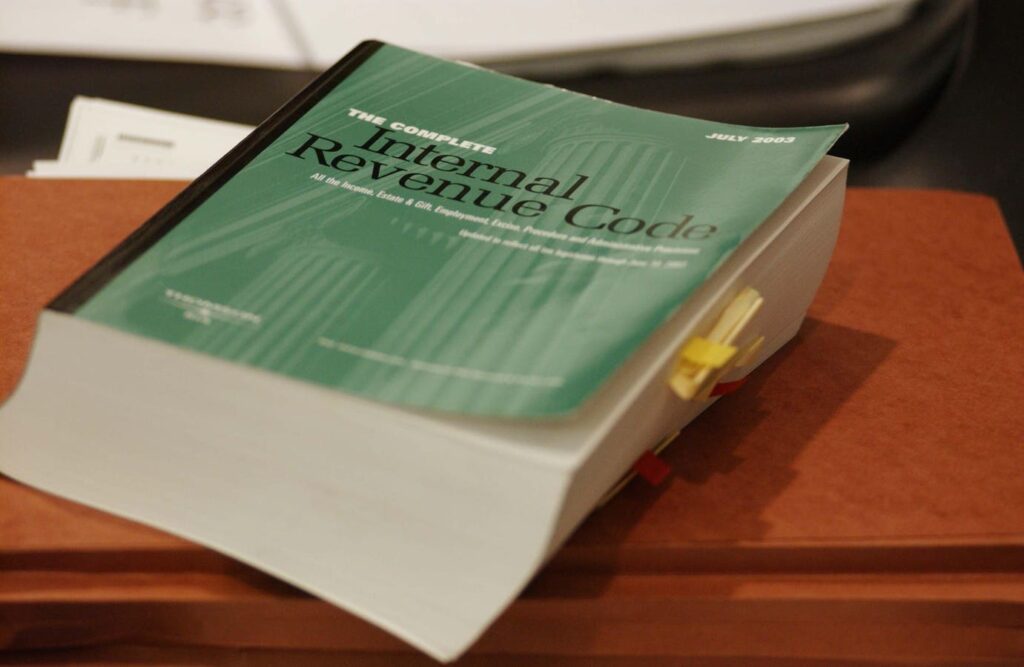There is nothing inherently wrong with forming and utilizing a charitable remainder annuity trust (“CRAT”) for tax-planning purposes; people do it all the time. Issues arise, though, when taxpayers claim positions generating benefits that arguably exceed those contemplated by Congress and the Internal Revenue Service (“IRS”). When this occurs, enforcement actions begin, and participating taxpayers must make difficult, time-sensitive decisions. This series of events, common in the world of tax controversy, is now happening with respect to a particular CRAT strategy.
How Things Work
The main rules regarding CRATs are found in Section 664 of the Internal Revenue Code and the corresponding tax regulations. These instruments are often enticing to a taxpayer with appreciated property; that is, property whose value has increased, often significantly, during the period that the taxpayer has owned it. Sure, the taxpayer could simply sell the property, but that would result in a gain subject to taxes right away. Another option is to transfer the property to a CRAT. When that occurs, the taxpayer (who is both the donor and life beneficiary) generally is not required to recognize gain, so he or she avoids being hit with income taxes immediately. The taxpayer also might be able to claim a tax deduction equal to the amount earmarked for charity. Importantly, the CRAT normally gets the same tax basis in the appreciated property that the taxpayer had when he or she transferred it. This is called “carryover basis” in tax speak, and it is an important concept for this article.
In a typical scenario, the CRAT sells the appreciated property and invests the proceeds, often buying a financial asset that will generate a steady income stream, like a single-payment insurance annuity (“SPIA”). The CRAT then makes distributions to the taxpayer for a specific period or throughout his or her life, and these are taxed as ordinary income, capital gains, or other income according to a set of ordering rules. When the taxpayer eventually dies or the distribution-period ends some other way, any assets remaining in the CRAT pass to charitable organizations. There is a minimum threshold for generosity, as one might expect. The rules dictate that the charitable donation must constitute at least 10 percent of the initial value of the property that the taxpayer transferred to the CRAT years before.
Why do taxpayers utilize CRATs? Possible upsides include legally postponing payment of income taxes on the transfer of appreciated property, creating a predictable income flow over a lifetime, obtaining a charitable tax deduction, and supporting benevolent endeavors.
Enforcement Evolution
The IRS identified years ago what it believed was improper behavior involving certain CRATs. Some have referred to it as the “Hoffman strategy.” This sparked a series of actions, some of which are described below.
Audits and Early Cases
The IRS audited dozens of transactions, taxpayers disagreed with the initial determinations, and several Tax Court cases were filed in 2019.
Pronouncement of Positions
In July 2020, the IRS issued a General Legal Advice (“GLA”), called AM 2020-006. It explained the relevant facts, issues, and IRS positions. The GLA underscored three major problems with the CRAT strategy being marketed to the public. For starters, when the trustee of the CRAT sold the appreciated property, it maintained that this event did not generate taxable income for the taxpayer or for the CRAT. This claim was based on the idea, strongly rejected by the IRS, that the tax basis of the CRAT in the appreciated property was its value at the time of the transfer (i.e., a stepped-up basis), instead of the tax basis that the taxpayer had in the property (i.e., carryover basis). Another problem, according to the IRS, was that the organizers incorrectly told the taxpayer that the multi-year distributions from the CRAT should be considered untaxable returns of corpus, except for minor amounts of interest income. This second position was rooted in the theory, also spurned by the IRS, that a CRAT is a tax-exempt entity. The third problem, from the IRS’s vantage point, was tax reporting, or better said, the lack of it. Specifically, the IRS noted that the organizers and their accountants did not properly report the initial sale of the appreciated property by the CRAT and did not file annual Forms 1041 (U.S. Income Tax Return for Estates and Trusts) for the CRAT, clinging to the idea of tax-exempt status.
Injunction Action
The next step consisted of an “injunction” action spearheaded by the Department of Justice, with assistance from the IRS. It filed a Complaint in early 2022 asking the District Court to do two main things: Stop certain people from organizing and marketing the CRAT strategy and force them to hand over to the U.S. government all the money they made in the past from doing so.
Two Tax Court Cases
What would a tax dispute be without some Tax Court brawling? The CRAT strategy did not disappoint in this regard, yielding two cases already.
The first case, Furrer v. Commissioner, was decided in late 2022. The taxpayers were farmers who saw an advertisement in an industry magazine about the CRAT strategy and decided to participate. They formed a CRAT in 2015 (“First CRAT”), naming themselves beneficiaries and their son as trustee. The taxpayers then transferred bushels of crops from their farming operation to the First CRAT, which it sold for about $470,000. The trustee distributed 10 percent of this amount to the charities. He used the other proceeds to buy a SPIA from an insurance company, which made payments of around $85,000 to the taxpayers in 2015, 2016 and 2017.
The taxpayers formed another CRAT in 2016 (“Second CRAT”) involving the same players. The taxpayers again transferred bushels of crops to the Second CRAT, which it sold for approximately $690,000. The trustee, following the earlier pattern, sent 10 percent to charities and used the balance to buy another SPIA. It paid the taxpayers about $125,000 per year in 2016 and 2017.
In terms of information reporting, the taxpayers filed a Form 709 (United States Gift Tax Return) for 2015, indicating that they contributed to the First CRAT crops with a cost basis of $0. Similarly, they filed a Form 709 for 2016 disclosing another contribution, this time to the Second CRAT, with a cost basis of $0.
Turning to taxes, the taxpayers did not include in their Forms 1040 the distributions from the First CRAT and Second CRAT on grounds that they constituted non-taxable returns of corpus. The only exceptions were minor amounts of interest income.
The IRS audited the Forms 1040. It determined, following the earlier GLA, that the distributions the taxpayers received from the First CRAT and Second CRAT in 2015, 2016 and 2017 were not non-taxable returns of corpus, but rather ordinary income. The IRS ultimately issued a Notice of Deficiency, seeking additional income taxes and penalties. The taxpayers resisted this treatment by submitting a Petition to the Tax Court. Before the case was called to trial, the IRS filed a Motion for Partial Summary Judgment, asking the Tax Court to determine a couple things. One request was for a ruling that all amounts that the taxpayers received from the SPIAs or CRATS (including the large annual distributions) should be considered ordinary income, taxed at the highest rates.
The Tax Court began by reiterating that the taxpayers, upon filing their Forms 709, admitted that their tax basis in the donated crops was $0. It then emphasized that the rules governing how to calculate basis have formed part of the Internal Revenue Code since way back in 1920. The Tax Court explained that when a taxpayer transfers property by gift, the basis of the recipient in the property generally will be the same as it was in the hands of the taxpayer, increased by any gift tax paid by the taxpayer. The Tax Court concluded that the taxpayers did not pay any gift taxes when they transferred the crops to the First CRAT and Second CRAT, so they acquired a basis of $0 in the crops, just like the taxpayers.
With the question of basis settled, the Tax Court turned to income tax matters. It explained that the First CRAT sold the crops for about $470,000, while the Second CRAT reaped around $690,000. Given the basis of $0 in the crops, all the sales proceeds represented profit. Because the taxpayers were active farmers, the crops in their hands were inventory, a type of ordinary income property. Accordingly, the profit generated by selling the crops was ordinary income, as opposed to capital gain. The Tax Court explained that the specific ordering rules in Section 664 indicate that all ordinary income must be distributed by a CRAT before any other items, including non-taxable corpus, can be released. Therefore, the full payments by the SPIAs or CRATs to the taxpayers in 2015, 2016 and 2017 were ordinary income.
The next case, Gerhardt v. Commissioner, was decided in April 2023. It constituted more of the same. The main actions, theories, and reporting positions were remarkably similar to those in the earlier case, Furrer v. Commissioner. The reasoning and rulings by the Tax Court were nearly identical, too. The only significant difference between the two cases was that penalties figured in the latter. The Tax Court acknowledged that taxpayers often deserve penalty waiver when they reasonably rely in good faith on qualified, informed, objective tax or legal professionals. However, citing relevant precedent, the Tax Court clarified that reliance by taxpayers might be unreasonable when it is placed on insiders, promoters, or persons with inherent conflicts of interest. The Tax Court ultimately sustained the penalty because the taxpayers failed to show the qualifications of their advisors, the nature of the communications with them, or the quality and objectivity of the advice they received.
Dirty Dozen Declaration
The IRS, applying steady if not increasing pressure, added the CRATs strategy to its “Dirty Dozen” list for 2023.
Making it a Priority
In September 2023, the Treasury Department, of which the IRS forms a part, issued its Priority Guidance Plan for the next two years. It indicated that during this period regulations might be issued making the CRAT strategy a “listed transaction.” Several things occur once a transaction acquires this label. For instance, participants must file Forms 8886 (Reportable Transaction Disclosure Statements), certain professionals must file Forms 8918 (Material Advisor Disclosure Statements), assessment periods might be extended, and new sanctions emerge, such as the “reportable transaction understatement” penalty found in Section 6662A.
Decision Time for Taxpayers
Any one of the items described above, alone, might not force the hands of taxpayers. However, the combination of early audits, GLA, injunction action, Tax Court decisions, Dirty Dozen characterization, and future listed transaction status likely will incentivize most taxpayers who participated in the CRAT strategy to contemplate their options and devise a plan. Four possibilities are explored below.
Taxpayers might do absolutely nothing, adopting a wait-and-see approach. If the IRS were to identify and audit such taxpayers, it probably would trot out the following contentions, consistent with what it previously announced in the GLA. First, the trust does not qualify as a CRAT under Section 664, with the consequences being that the sale of the appreciated property by the trust immediately triggers taxable gain, and the taxpayers cannot claim a tax deduction for any amounts destined for charities. Second, if the trust manages to qualify as a CRAT, then all distributions to the taxpayer from the CRAT should be treated as taxable income, not as non-taxable returns of trust corpus. Third, in addition to tax increases, penalties are warranted. Among the probable sanctions are a negligence penalty equal to 20 percent of the tax liability, or in egregious cases, a civil fraud penalty of 75 percent. Taxpayers could dispute these IRS positions during audits, conferences with the Appeals Office, Tax Court litigation, and beyond.
Another possibility for taxpayers, depending on the circumstances, might be filing a Qualified Amended Return (“QAR”) with the IRS. In the case of an individual taxpayer, a tax “underpayment” generally means the difference between the tax liability that the taxpayer actually reported on his or her Form 1040 (U.S. Individual Income Tax Return), and the tax liability he or she should have reported if things had been done correctly in the first place. For instance, where the taxpayer’s true tax liability was $100,000 but he or she only reported $80,000 on Form 1040, then the IRS ordinarily could assert a penalty of $4,000 (i.e., a $20,000 tax understatement multiplied by a 20 percent penalty). The QAR is an obscure mechanism that allows taxpayers to eliminate a tax “underpayment” after filing the original Form 1040 with the IRS. In essence, if a taxpayer files a Form 1040 and later realizes that it showed a tax underpayment, he or she has a limited opportunity to submit a QAR to rectify the situation and avoid penalties. The regulations under Section 6664 indicate that a return will not be considered a QAR unless the taxpayer files it before one of several things, including the date on which the IRS contacts the taxpayer about a civil examination or criminal investigation, the IRS contacts any person about a “promoter investigation” concerning the relevant transactions, the IRS issues a Summons that will result in disclosure of the taxpayer, or the IRS announces an applicable settlement initiative or the like.
Taxpayers might also consider proactively resolving matters with the IRS through what has been called the updated voluntary disclosure practice (“UVDP”). This usually begins when a taxpayer submits a Form 14457 (Voluntary Disclosure Practice Preclearance Request and Application). Cases addressed through the UVDP normally cover the most recent six years, require repayment of all taxes, and involve a civil fraud penalty for one year. Critically, the UVDP is designed exclusively for taxpayers who engaged in willful, fraudulent, or criminal behavior. The Instructions to Form 14457 make the scope of the UVDP quite clear, stating the following: “You should consider applying for the [UVDP] if you engaged in willful non-compliance that exposes you to criminal liability for tax and tax-related crimes, you meet the eligibility requirements, and you wish to come into tax compliance and avoid potential criminal prosecution.” Many taxpayers who implemented the CRAT strategy discussed in this article reviewed marketing materials featuring assurances about its legitimacy, relied on advice from attorneys and accountants, and filed returns with the IRS consistent with such materials and advice. Under these circumstances, taxpayers might conclude that the UVDP is not for them.
Finally, some taxpayers might contemplate making what the IRS and practitioners have traditionally called a “quiet disclosure.” The IRS announced in years past that quiet disclosures were prohibited and it intended to harshly punish any taxpayer who attempted to circumvent formal IRS disclosure programs. Things changed in 2018, when the IRS introduced the UVDP. The relevant announcement, found in IRS Memorandum LB&I-09-1118-014, clarifies that taxpayers can make a quiet disclosure in certain situations. It stated that taxpayers “who did not commit any tax or tax-related crimes” can correct their past violations “by filing an amended or past due tax return.” High-ranking IRS officials subsequently confirmed this during presentations at major tax conferences. Taxpayers who implemented the CRAT strategy targeted by the IRS, who want to avoid the risks associated with the wait-and-see approach, who do not meet the eligibility criteria to file QARs, and who reject the idea that they engaged in willful, fraudulent or criminal behavior that must be rectified through the UVDP, might mull over a quiet disclosure. Those following this path likely would file the necessary returns with the IRS, making pertinent disclosures, backing out the tax benefits, and highlighting reasons for penalty waiver.
Parting Thoughts
Putting aside the validity or invalidity of the CRAT strategy described in this article, taxpayers face some certainties. One is that the IRS has identified the transactions as problematic, clarified its tax positions, and persuaded the Tax Court to rule in its favor at least twice. Another is that the IRS, emboldened by the injunction action and Tax Court victories, will continue its enforcement activities. It also appears that, if the IRS adheres to its list of priorities, the CRAT strategy will become a “listed transaction” soon, with all that entails. These three realities should lead taxpayers with problematic CRAT transactions to hire specialized professionals, fully analyze their options, and take appropriate steps, which will vary depending on the details of each case.
Read the full article here













